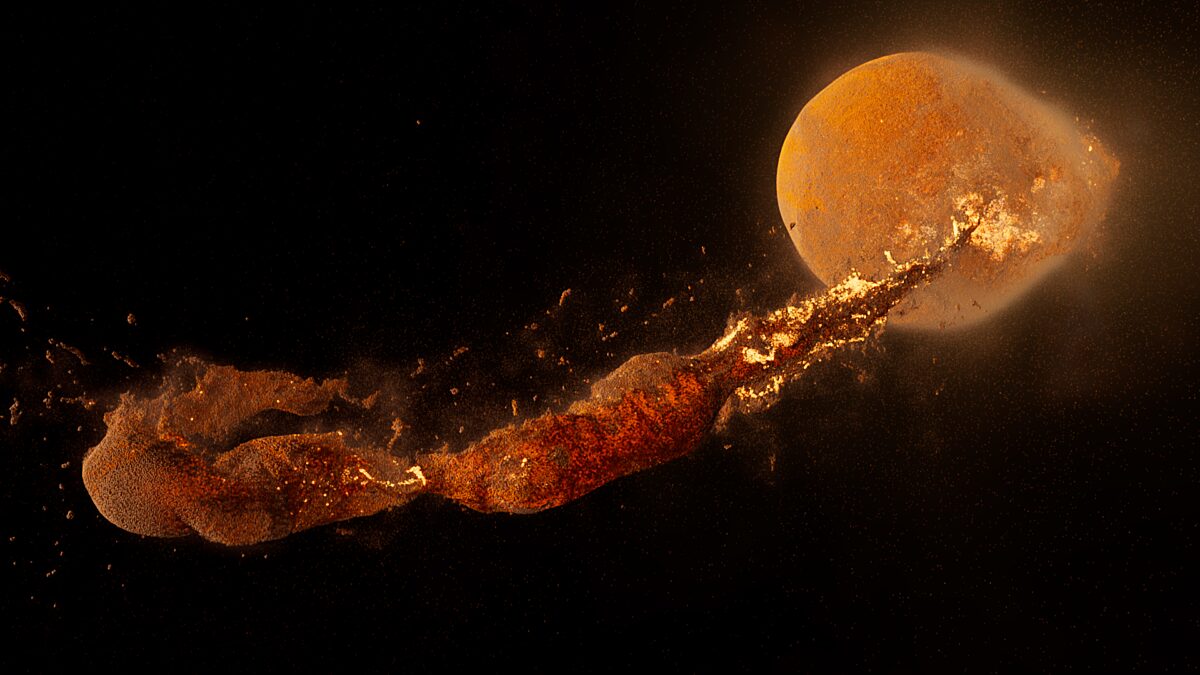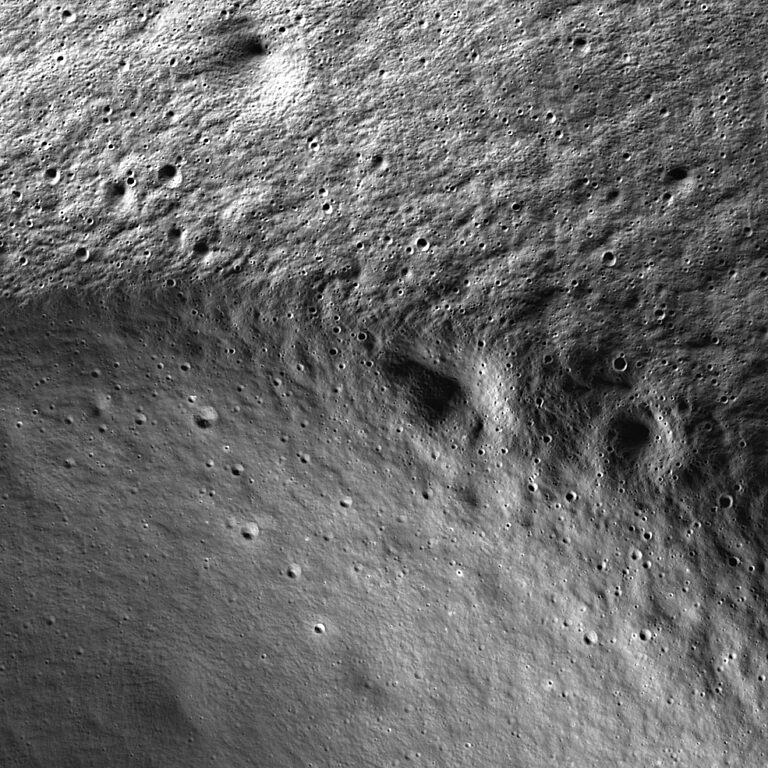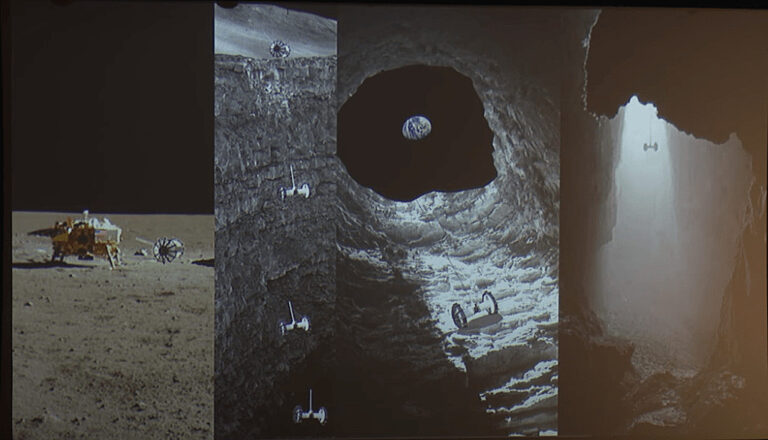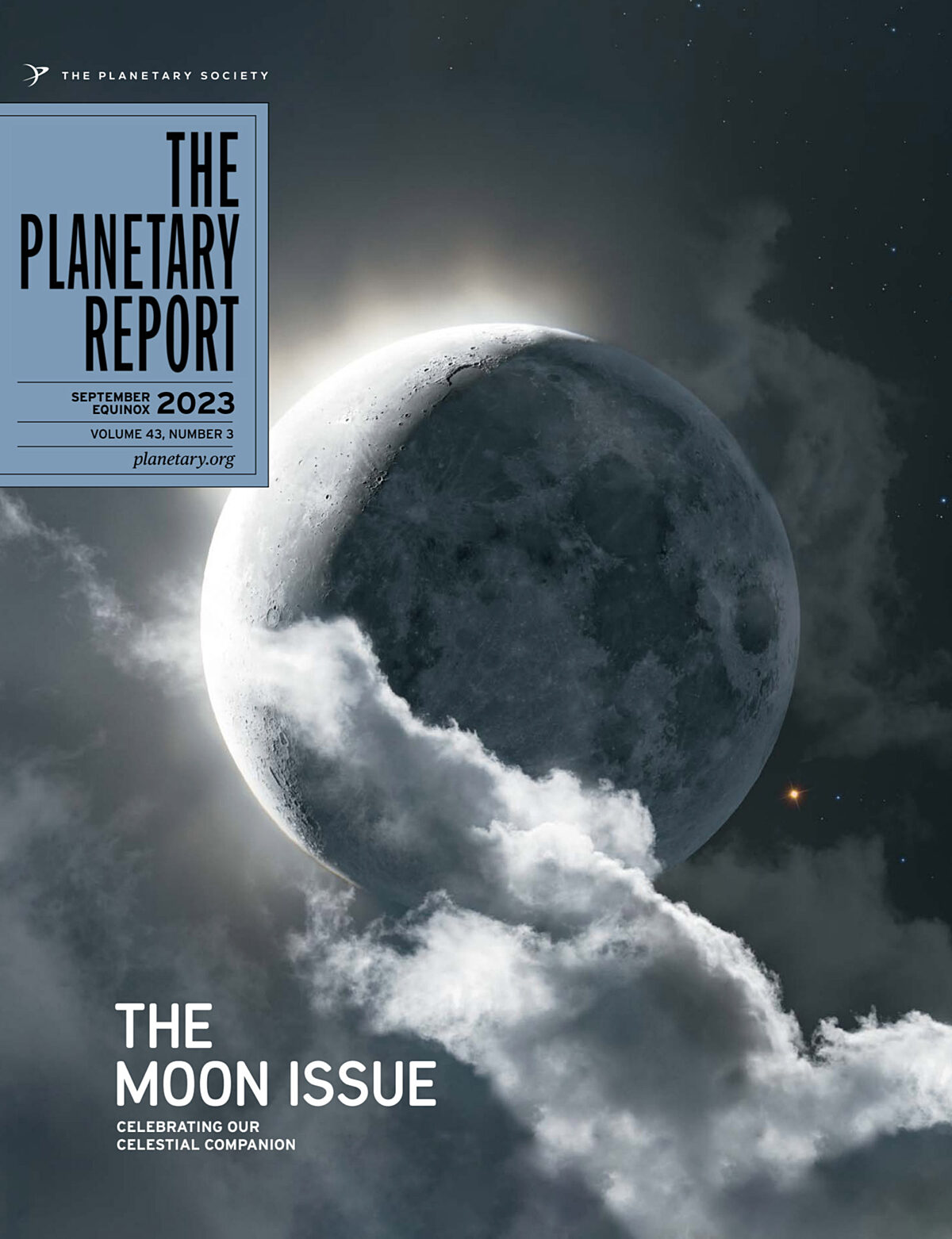A lunar saga
When the Moon entered the planetary scene some 4.5 billion years ago, it did so in dramatic fashion. This set the stage for an era of the Moon’s history in which it was very different from its serene present-day form. But evidence of this colorful past can still be found on our celestial companion, and new research continues to uncover wild stories from its youth.
The Moon was forged when Earth collided with a Mars-size object named Theia. The two colliding planets threw huge chunks of super-heated rock into space, which came together gravitationally to form the Moon. New research suggests that this may have happened within a matter of hours — not months or years as previously thought.
This violent, rapid event brought the Moon into existence, but it took a long time before it became the Moon we know today.

As we know from far-flung moons like Enceladus and Io, when a celestial body is squeezed by gravitational forces, it produces thermal energy that can melt ice and even rock beneath the surface. The thermal energy produced by a little squeezing is nothing compared to that produced by a massive collision and a rapid accretion of material. Naturally, the formation of the Moon generated an enormous amount of heat. For tens or even hundreds of millions of years after its formation, the Moon was a ball of magma.
The way the Moon cooled down from this magma state may explain why the lunar nearside and farside look so different today. The theory is that as the Moon’s outer crust cooled enough to harden, it did so more quickly on the lunar farside. This happened because the Moon established its tidal locking — rotating at just the right speed to always have the same side facing Earth — fairly quickly. Because Earth was pretty red-hot from its impact with Theia for quite some time as well, it warmed the side of the Moon that faced it. This likely made the nearside crust harden more slowly, allowing subsurface magma to break through while it remained thin.
The implication of this is that the Moon had active volcanoes on its surface, especially on its nearside, for many billions of years. That volcanic activity is thought to have generated atmospheric gases, leading to a lunar atmosphere that may have been twice as thick as Mars’ current atmosphere. The idea of the Moon as a smoggy world with red-hot lava pouring from volcanoes seems totally bizarre compared to what we see now, but it represents a long part of the Moon’s history. The Moon’s volcanic activity only completely ceased about 50 million years ago.

Although we aren’t treated to such exciting sights when we look up at the Moon today, we do see the aftermath of its volcanic era. The familiar face of the Moon has dark areas all over it, which scientists call plains, seas, or maria. These are made of basaltic rock, which erupted from volcanoes and settled into low-lying areas like impact craters.
In 2009, the Japanese lunar orbiter Kaguya observed another remnant of the Moon’s past volcanism. The spacecraft imaged a large pit that is too deep for its width to be an impact crater. Instead, it appears to have been formed by lava.
Back in its volcanic days, the Moon’s low gravity allowed much larger volumes of lava, especially low-viscosity ballistic lava, to flow from volcanic eruptions across much greater distances than we see with lava flows on Earth. Sometimes, a flow would carve out a channel in the rock below, and the top layer of lava would cool down. The remaining magma would continue to flow beneath in a tube-shaped passage until all the magma eventually drained out, leaving the tube behind.
These subsurface tubes reveal themselves to orbiting spacecraft when a portion of the tube collapses due to a nearby impact or some other disturbance, leaving a hole called a skylight that can be seen from above by spacecraft like Kaguya.
Since this first skylight discovery, various lunar orbiters have found more than 200 others on the maria (the flat, dark plains) of the lunar nearside. They range in diameter from about 5 meters (16 feet) to more than 900 meters (2,950 feet) and are believed to lead to particularly enormous lava tubes. The biggest lava tubes we’ve found on Earth, in Kazumura Cave on the Big Island of Hawai’i, are about the size of a typical tunnel through which you’d drive a car. On the Moon, some are 300 to 700 times that size. There are lava tubes tall enough to fit the world’s tallest building inside them, and others are large enough to contain a whole city.

Indeed, these lava tubes might be the ideal places to establish human settlements on the Moon. The rock surrounding these tubes could protect against harmful solar radiation, micrometeoroid impacts, and the huge temperature swings that the surface experiences due to its lack of atmosphere. Various mission concepts from NASA and the European Space Agency have explored ways of sending rovers down into these lunar skylights, helping determine whether they and the lava tubes to which they lead would be suitable for developing human settlements.
The other big requirement for establishing long-term settlements on the Moon is water, both for keeping astronauts hydrated and for producing fuel. And luckily, more and more evidence of water is being found on the Moon, contained in rocks throughout its surface and interior and in ice deposits within permanently shadowed craters at its poles.
New discoveries of water on the Moon are being made all the time from data collected by missions, including India’s Chandrayaan-1 orbiter, NASA’s Lunar Reconnaissance Orbiter and Lunar Crater Observation and Sensing Satellite, China’s Chang’e-5 sample return mission, and even new studies of the Moon rocks brought home by Apollo astronauts.
The question of where this water came from remains unanswered. It’s possible that comets bombarded the Moon along with Earth in the earlier days of the Solar System, bringing in ice from the frozen reaches of the Kuiper Belt. It’s also possible, though, that water might have been present on Earth and/or Theia prior to their collision and accreted along with the rest of the Moon when it formed. Only by continuing to study our surprisingly storied satellite can we find out whether its beginnings were as watery as they were fiery.
Support our core enterprises
Your support powers our mission to explore worlds, find life, and defend Earth. You make all the difference when you make a gift. Give today!
DonateThe Planetary Report • September Equinox
Help advance space science and exploration! Become a member of The Planetary Society and you'll receive the full PDF and print versions of The Planetary Report.


 Explore Worlds
Explore Worlds Find Life
Find Life Defend Earth
Defend Earth


